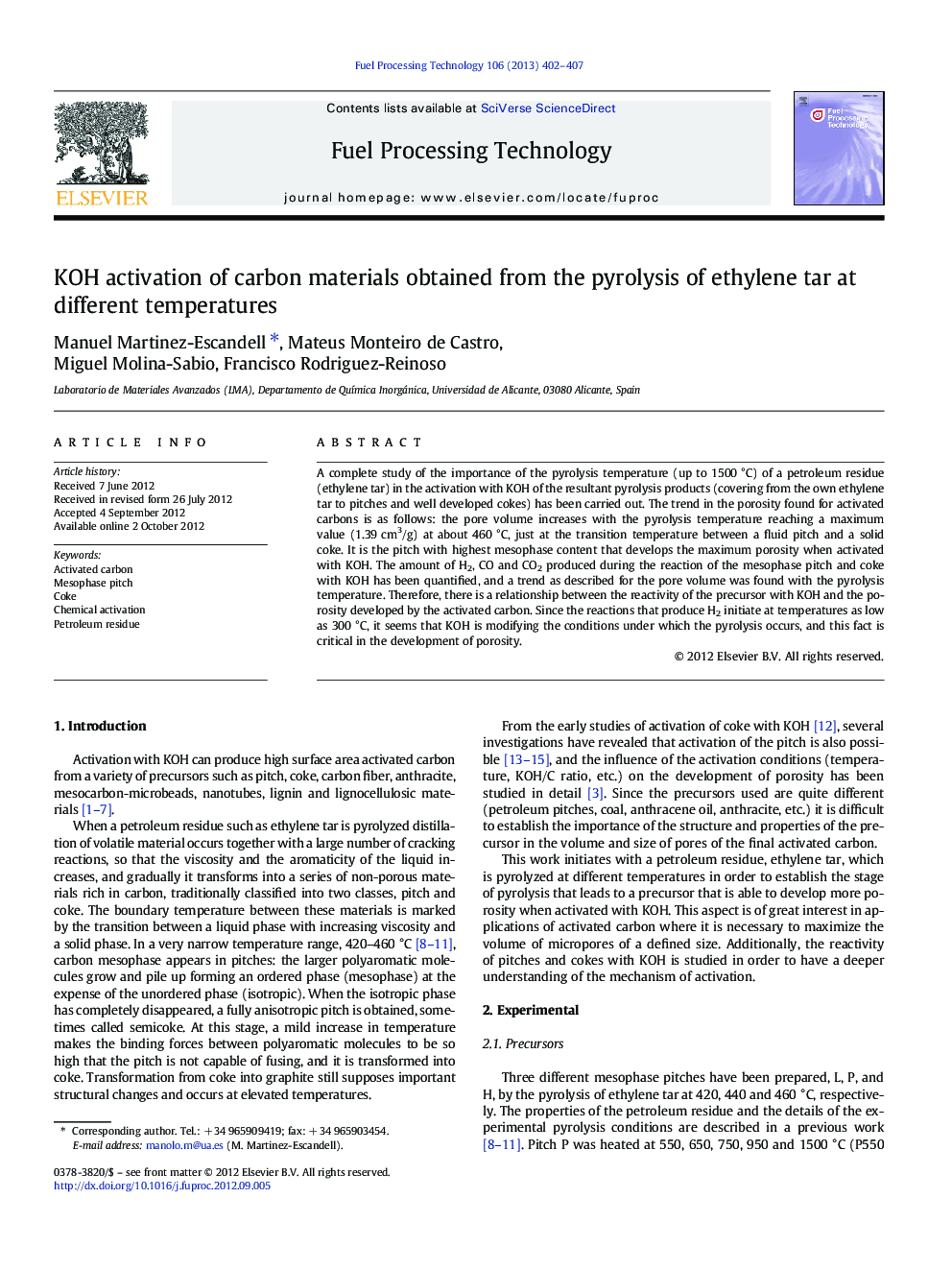| Article ID | Journal | Published Year | Pages | File Type |
|---|---|---|---|---|
| 210079 | Fuel Processing Technology | 2013 | 6 Pages |
A complete study of the importance of the pyrolysis temperature (up to 1500 °C) of a petroleum residue (ethylene tar) in the activation with KOH of the resultant pyrolysis products (covering from the own ethylene tar to pitches and well developed cokes) has been carried out. The trend in the porosity found for activated carbons is as follows: the pore volume increases with the pyrolysis temperature reaching a maximum value (1.39 cm3/g) at about 460 °C, just at the transition temperature between a fluid pitch and a solid coke. It is the pitch with highest mesophase content that develops the maximum porosity when activated with KOH. The amount of H2, CO and CO2 produced during the reaction of the mesophase pitch and coke with KOH has been quantified, and a trend as described for the pore volume was found with the pyrolysis temperature. Therefore, there is a relationship between the reactivity of the precursor with KOH and the porosity developed by the activated carbon. Since the reactions that produce H2 initiate at temperatures as low as 300 °C, it seems that KOH is modifying the conditions under which the pyrolysis occurs, and this fact is critical in the development of porosity.
► Porosity increases with pyrolysis to a maximum at the transition from pitch to coke. ► The pitch with the largest mesophase content develops the highest porosity. ► The amount of H2 and CO evolved during activation is related to the porosity achieved. ► KOH modifies the conditions under which pyrolysis occurs.
